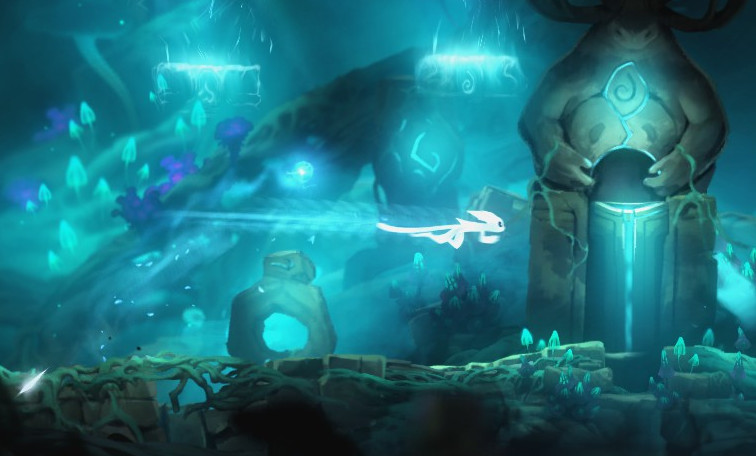

The feather barely does any damage, but it creates a gust of wind to knock the opponent away. Ori pulls out Kuro’s feather and waves it. Ori pulls out their light sword and uses three horizontal slash attacks.įorward A: Flap. It's worth noting that Ori has a lot of recovery options (a third jump, and his up special, down special, and (depending on the circumstances) neutral special can all be used to recover either horizontally or vertically), so as a result, they are extremely light - probably somewhere around the Jigglypuff or Pichu range.Ī->AA->AAA: Spirit Edge. (I want to avoid the temptation to borrow too much from Rivals of Aether) Also, like in their games, they get a third jump, which has a similar gust of wind effect when they use it.


I’ll be basing Ori on Will of the Wisps, as opposed to the Blind Forest. For idle animations, Ori looks back and forth or yawns. There’s a flash of light and Ori appears, spinning around before gently touching down on the ground. Ori enters the stage with a reverse of their warp animation. The regular version will be a walk-off stage with curved floors, kind of like the Mario Galaxy stage except not being perfectly round. Much like the Ori games, you can’t directly interact with it – it will be in the background, providing some impressive-looking scenery. It’s used as an autosave notification for Ori and the Will of the Wisps, so it should work.įor a stage, I feel like the Spirit Tree makes the most sense, since it’s important enough to appear in the title screen of both games.
#Ori and the blind forest dash attack series
For the last two palettes, I’ll reference the Spirit Light (along with Seir from Will of the Wisps) by having Ori glow bright orange, and the Moki (ferret-like creatures from Will of the Wisps that resemble Ori) by giving Ori a brown palette with bright yellow eyes.įor a series logo, I think I’ll go with the O from the game’s title. Another palette makes Ori dark blue with yellow eyes to reference Gumo.
#Ori and the blind forest dash attack skin
Another palette will almost invert Ori’s colours, giving them dark purple (almost black) skin and white eyes as a reference to characters like Kuro, Ku, and Naru. Three of the palette swaps will be borrowed from Rivals of Aether, making Ori light red, light blue, and light green, with their regular eye colour in all of the cases. In addition, Ori's appearance in Rivals of Aether can help to give the uninitiated an idea of how he might work in Smash Bros. (platformers with an emphasis on exploration and gaining new abilities, like the Metroid games or Castlevania: Symphony of the Night) As a result, there's a lot of material to draw from for the character (as anyone who's played a Metroidvania will know, characters get a ton of different abilities by the end of it, and Ori plays quite differently between their two games), and a large amount of locations to work with for potential stages, ranging from the Spirit Tree that Ori originated from to icy mountaintops, harsh deserts, dark caves, or foggy forests. Ori and the Blind Forest and its sequel, Ori and the Will of the Wisps, are Metroidvanias.

(Ori is, as far as I can tell, genderless, so I'll stick with "Ori", "they", or "them") While Ori started out as being exclusive to Microsoft consoles (and PC, much like a lot of Microsoft's major releases as of late), Ori and the Blind Forest received a Switch port last year, and as of the time that I'm writing this, Rivals of Aether: Definitive Edition (which includes Ori as a playable character) is coming to the Switch some time this month. Ori is a small guardian spirit whose quest to find a family gets him wrapped up in all sorts of dramatic adventures. First Appearance: Ori and the Blind Forest (Windows and Xbox One, 2015)įirst Nintendo Appearance: Ori and the Blind Forest (Switch, 2019)


 0 kommentar(er)
0 kommentar(er)
